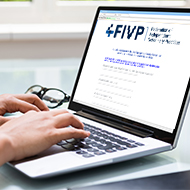
3D model will support studies into poultry health and disease.
Scientists from the Roslin Institute have developed inside-out miniature intestines, also known as enteroids, grown from stem cells, in order to improve research into poultry health and disease.
The development of the mini-guts follows a decade of research into organoids. The research team hopes that their creation will advance studies into common infections that affect birds around the world, and allow better understanding of the immune response to disease in chickens.
This creation will also reduce the number of animals used in research.
The mini-guts are the first of their kind to naturally include cells from the immune system and have been created with the internal gut surface on their exterior. This accessible surface enables researchers to easily expose the tissue to disease-causing organisms, feed additives, vaccines and drugs and then to monitor the effects.
Organoid development typically takes place inside a protein-rich gel dome, surrounded by growth factor-supplemented liquid cell culture. These conditions allow stem cells to follow their own genetic instructions and form structures that resemble miniature intestines.
According to the Roslin Institute, the growth conditions in this case enabled a reverse of the usual structure, with the enteroids growing inside-out.
Tessa Nash of the Roslin Institute said: “Studies into the gastrointestinal systems of birds have long been hampered by a lack of cell culture tools. But with the development of these novel mini-guts we can now study diseases that are of importance to the poultry industry, including zoonotic infections such as Salmonella and flu.”
Professor Lonneke Vervelde of the Roslin Institute said: “Inside-out organoids will support studies to develop our understanding of how gut tissue in chickens responds to for example disease, feed additives, nutrition and heat stress, saving time and reducing the number of animals needed for this process.”
Further information on the creation of the enteroids can be found in Communications Biology volume 4.



 FIVP has shared a survey, inviting those working in independent practice to share their views on the CMA's proposed remedies.
FIVP has shared a survey, inviting those working in independent practice to share their views on the CMA's proposed remedies.